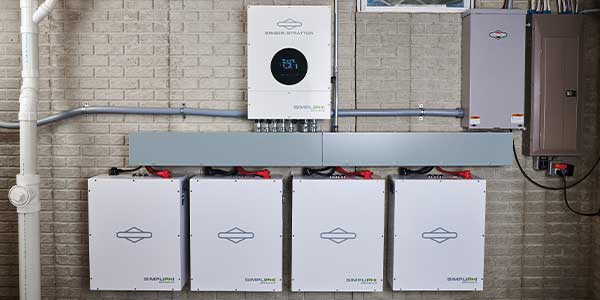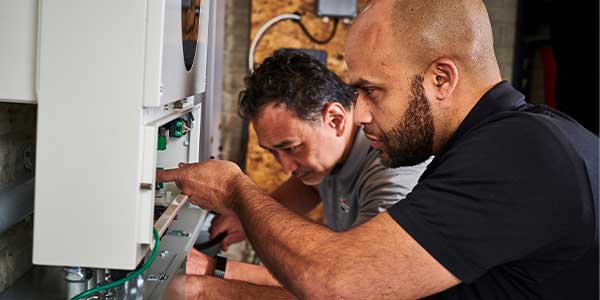Energy Storage Systems: What to look for

When deciding which Energy Storage System (ESS) to recommend or install, it’s important to understand the differences between the offerings of various manufacturers. These differences often hold the key to deciphering Levelized Cost of Energy Storage (LCOES). One of the most helpful resources when evaluating the differences between various systems is to examine the product specification sheets.
Here is a reminder about what LCOES is and how to calculate it.

While it is common to make purchasing decisions based on upfront price, the LCOES considers the battery’s total capacity, the Depth of Discharge (DoD) that you intend to use, cycle life rating at the DoD considered, efficiency rating, and total ancillary costs over the life of the battery. Below is a simplified LCOES calculation.
Here are some of the most important elements of a specification sheet.

Kilowatt Hour Capacity
Total rated kilowatt-hour capacity is typically a battery’s nameplate kWh, and usable kilowatt-hour capacity is the amount of capacity that you will use or are actually required to utilize at a specified DoD by the manufacturer. Both of these values provide an estimate of how much energy a system can store, but usable kilowatt-hour is the percent of energy you can actually use out of the total rated nameplate capacity. Depending on the battery, there are different charge and discharge rates, identified as the “C-rate”. This equates to the amount of energy that a system can pull out of a battery in a specific timeframe. This metric gives you an idea of how much instantaneous as well as long-term capacity in kWh can be pulled from a system. It also dictates the charge and discharge rate of a battery.

Depth of Discharge (DoD)
When trying to determine which battery is most cost-effective, it’s essential to review the allowable or, more importantly, warrantied depth of the discharge. For example, some batteries are only under warranty when they aren’t discharged (or used) beyond 70% of their total rated capacity at a time. A manufacturer like SimpliPhi®, a Briggs & Stratton brand, has cobalt-free, Lithium-Ion batteries that can often be discharged 80% to 100% without negatively affecting their rated cycle life at each DoD. This results in significantly more available energy to use hour over hour, meaning the batteries will provide more value over the span of their life with a warranty to back it up.
Cycle Life or Throughput
Cycle life refers to the number of full charge and discharge cycles expected over a battery’s lifetime while it has at least 80% of its original published capacity left, which is the industry standard end-of-life (EOL) definition. Some battery manufacturers do not hold to the 80% EOL, which can make it difficult to assess LCOES accurately. This specification, the total kWh throughput capacity over the battery’s warranted life, may be presented in either megawatt-hours or total cycles.
End-of-Life Capacity
A battery reaches its EOL when it can only store a reduced percentage of its original rated nameplate storage capacity. SimpliPhi batteries have an EOL of 80%; other manufacturers’ batteries have an EOL of only 60% to 70%. That means that after a 10-year warranted timeframe, or after cycling the battery 10,000 times at 80% DoD, the battery will still have 80% remaining capacity. It will continue to be used far beyond the 10,000 cycles. End-of-life is a very important metric to consider on a comparative basis when purchasing an ESS because it is a solid indicator of the value the system will provide over the entire span of its life.
Ancillary Costs to Watch For

To mitigate the risk of “thermal runaway” and fire and be eligible for warranty coverage, cobalt-based lithium-ion batteries must be operated within a narrow ambient temperature range. Maintaining a safe operating temperature for the cobalt-based lithium batteries requires ventilation, cooling, and thermal monitoring equipment. This additional ancillary equipment creates additional costs and risks of failure in your energy storage system that are not reflected in the “list price” per kWh of the lithium cobalt battery itself. While cobalt-based lithium-ion batteries may be cheaper on an upfront $/kWh basis, they are much more expensive at the point of installation and over the lifetime of the energy storage system. In addition, many cobalt-based lithium-ion battery manufacturers void the warranty if the required ambient temperature is not maintained and recorded on a daily basis.
Interested in learning more about Briggs & Stratton energy storage options? Get in touch with us.
Tags: Briggs & Stratton




Comments are closed here.